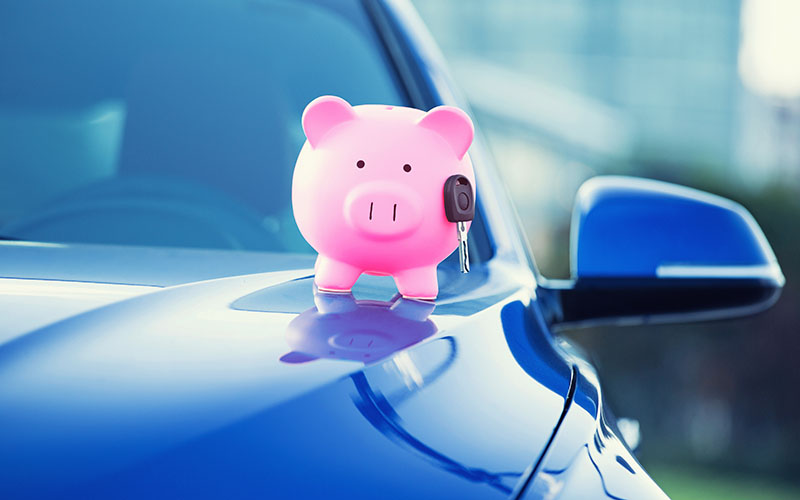Is Living Without a Car Right for You?
Key Takeaways
- Evaluate your access to public transit, walkability, and proximity to daily essentials before giving up your car
- Make a list of frequent destinations and assess how you'd reach them using alternative transportation
- Consider biking, walking, buses, trains, and rideshares to replace car travel, and compare costs
- Weigh financial and environmental reasons against potential alternatives like leasing or owning an electric vehicle
- Don’t ditch your car without a plan and ensure the change fits your lifestyle and long-term needs

Driving is often considered a core part of the American lifestyle, and for many of us, it's a necessity. Commuting to work, running errands, and visiting friends and family are all things we might do in a single day.
The average U.S. household owns two vehicles — and 64% of Americans reported that they drive daily (with another 19% stating that they would use it multiple times in an average week). However, some people have growing financial and climate concerns surrounding owning a car. These concerns are leading many people to consider the possibility of living without a vehicle.
Living car-free may seem like a romantic idea, and for some, it's a good decision. But, before you get rid of your vehicle, you'll want to be aware of the potential challenges. To avoid significant financial and personal repercussions, take a look at these tips for deciding whether living without a car is right for you.

Consider Your Location
You may be able to get around via public transit and alternative means of transportation in some cities, but not all. For instance, a heavily populated metropolis may have an excellent public transit system and many amenities within walking/biking distance. However, some rural areas might not have any public transportation options, and the only hospital could be miles away.
Some questions to ask yourself to fully understand whether you can go carless in your location might be:
- How far away from work do you live?
- How far away are other necessary facilities (hospital, grocery store, school)?
- Can you bike or walk this distance every day?
- Are there public transportation options?
- How much will public transportation cost?
If you think you can walk everywhere, a look at your location’s walk score can let you know if you can. A walk score is a measure of how many amenities are within walking distance of your home. Walk scores range from zero to 100, and the closer the walk score is to 100, the more amenities will be found within walking distance.
The decision to live without a car should not be taken lightly. Before you make the leap, it's essential to think about your current location and what life would look like there with no vehicle at your disposal.
Make a List of Common Destinations
If you are considering going car-free, it is wise to make a list of common destinations you go to and think about how you will get to these places without a car. For example, if you want to go grocery shopping at your local market, how do you plan on getting there? Do you walk or bike? Do you take the bus and then walk the remaining distance?
Or maybe it is too far away, and you need to consider a different location. You can use Google Maps to help create a list of these places and help identify which ones are most accessible without a vehicle.
Your list of common destinations should include:
- Grocery stores;
- Medical facilities/hospitals;
- Bars, restaurants, cafes;
- Education facilities (schools and universities);
- Retail shops (clothing, hardware, drug stores).
These are only a few common destinations that you might have. You can add others to your list depending on where you go in your day-to-day life. This will be especially helpful if you plan on using public transportation or biking instead of driving. It is crucial to keep in mind that not everywhere will be accessible by walking or biking, so it is vital to identify these types of places for when you don't feel up to the challenge.
Know the Available Alternatives

Many individuals abandon their cars because they believe other methods of transportation will suffice. If you’re going car-free, ensure you have access to alternative transportation. If you do not, most any problem from small to large will be much more difficult to overcome.
Bicycles are a good choice in cities that have biking trails and lanes. Otherwise, they do not work well in large cities with high congestion and limited road space — such as New York City — where public transportation is more efficient.
Consider these alternative modes of transportation and how much time it will take to use them before getting rid of your car:
- Walking
- Biking
- Bus
- Rapid transit
- Train
- Carpooling/ridesharing
You do have alternative transportation options, however, you will want to do your homework to see if these will be more affordable than a car.
Check Your Reasoning
If you are considering going car-less for financial reasons, you may want to reexamine your accounting. Often, you may find that an electric car costs less (in the long run) than a gas-powered car. Additionally, you may find that leasing a gas or electric vehicle is even more affordable. If it is a matter of loan financing, you may want to consider refinancing your car loan to get a lower interest rate.
Sustainability is another concern you may have about owning a car. If you are concerned with pollution, you should opt for an electric vehicle or an electric bike.
Before you go car-less, you must consider all the options available to you. You want to make sure that you can survive without a car in your life before giving up this crucial mode of transportation.
Make a Plan
Living car-less is not as simple as it seems. You have to know how you will get around town without a car before you give up the keys. Take the time to consider your reasons for going car-less, and then create a plan to make it work. If you want to go car-less but cannot make a plan work, perhaps you should consider keeping your car.
- Consider an electric car, which will save you a lot on the cost of fuel over time. For example, Tesla cars have been getting better and cheaper with each iteration, so you can expect the Model 3 to be at least as affordable as most other new cars.
- Consider leasing a car for three years or less to save money on gas and/or maintenance costs.
- Shop around for pricing — don't just buy the first car you see due to lack of research. You can find a great deal, even with bad credit.
- Consider buying used rather than new. Often, you can find a gently used car for a significantly reduced price.
- Regularly service your car. You can prevent minor issues from turning into severe expenditures by detecting and addressing them early on.
No one should relinquish their car without having a plan and knowing that it is a personally and financially sound decision first.
If You Decide To Live Car Free

Living car-free can be a great way to save money. Here are some alternative ways to travel that don’t require you to own a car.
-
Start walking and biking more — If you need to go somewhere, instead of rolling out of the driveway with the engine running and sitting in traffic for an hour, walk or bike there. You can make it part of your daily routine and won't even have to think about it anymore.
-
Ride transit — We all love the convenience of driving wherever we want, but what about those times when we would like to go downtown, and there is no place to park? Additionally, you can take the bus. You can relax and read a book while you explore the city.
-
Carpool — Riding with someone else can be great. It's healthy for your wallet and the earth.
-
Rideshare — This goes along with the last two suggestions. It is also a great way to make new friends and eliminate worries about parking, and it may be cheaper than driving and owning a car.
When it comes to whether or not living without a car is the best option for you, there are several factors to consider. There are many benefits associated with this lifestyle; whether they're financial, environmental, or personal is up to you. But keep in mind that there are many benefits to owning a car as well. You just have to decide what works best for your lifestyle.
Edited by:
Bryan Huynh
•
Product Tester & Writer





